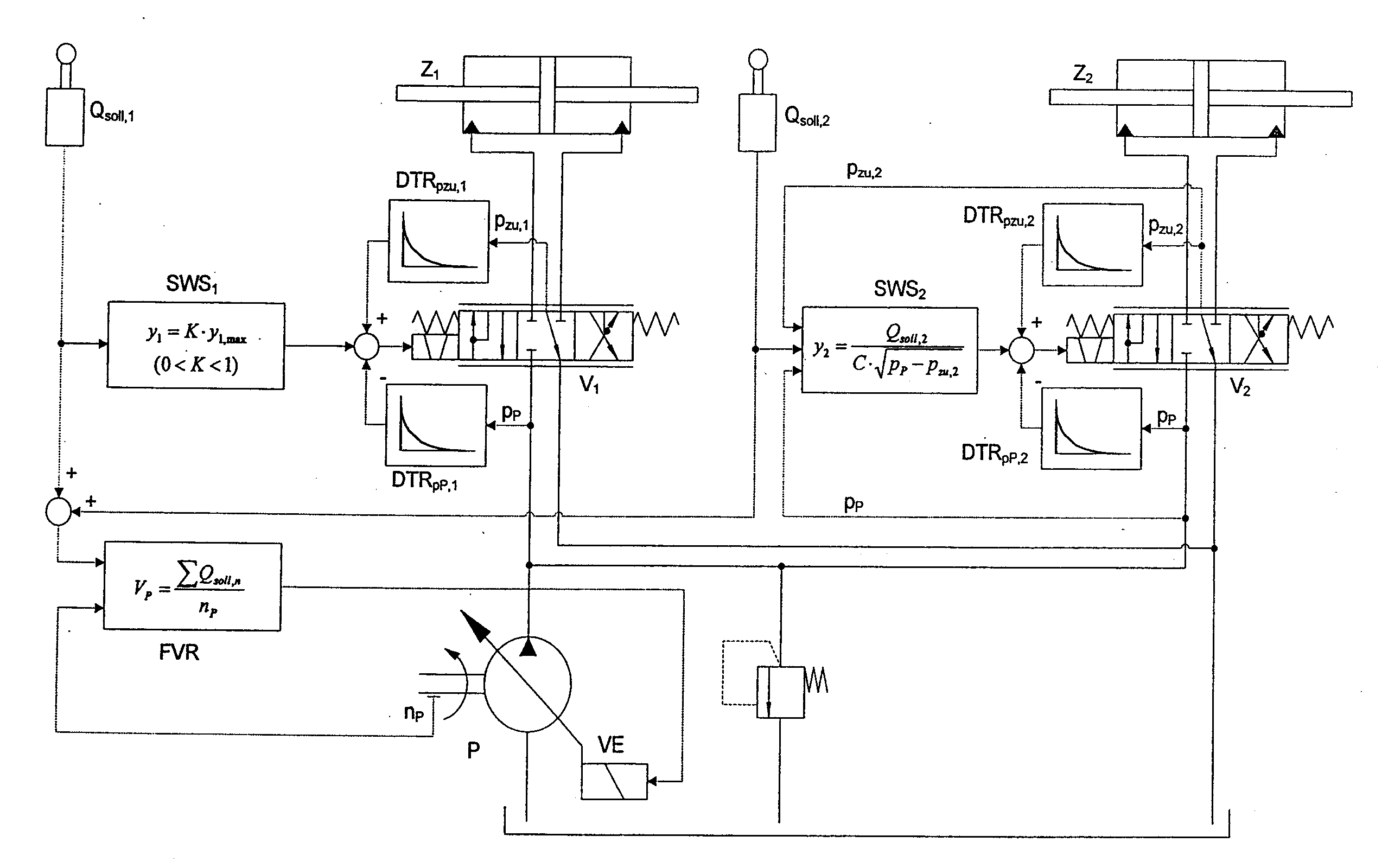Method and circuit arrangement of the supply of pressue medium to at least two hydraulic consumers
a technology of pressure medium and hydraulic consumer, which is applied in the direction of fluid coupling, servomotor, coupling, etc., can solve the problems of reducing the efficiency of the system, so as to achieve optimal compromise between energy efficiency and dynamics, and minimize the effect of mutual influence of various simultaneously operated consumers
- Summary
- Abstract
- Description
- Claims
- Application Information
AI Technical Summary
Benefits of technology
Problems solved by technology
Method used
Image
Examples
Embodiment Construction
[0018]FIG. 1 shows an exemplary embodiment of the invention. The essential elements of the hydraulic circuit and of the electronic signal flow are in this case illustrated jointly, specifically by the example of two consumers, of which the first consumer Z1 stands for that with the highest load pressure and the second consumer Z2 represents, where appropriate, a plurality of consumers having a lower load pressure.
[0019]A pump P, driven for example by a diesel engine, not illustrated, rotates at the rotational speed nP. The pivot angle (and thus the displacement volume) of the pump P can be controlled via an electrically actuatable adjustment device VE. This regulation takes place by means of the displacement controller FVR according to the sum of the required flows QS011,1, and QS011,2 the displacement volume of the pump VP being regulated, taking into account the rotational speed of the pump nP, to
VP=∑Qsoll,nnP
[0020]This setup allows to adjust flow and pressure in quasi-stationary ...
PUM
 Login to View More
Login to View More Abstract
Description
Claims
Application Information
 Login to View More
Login to View More - R&D
- Intellectual Property
- Life Sciences
- Materials
- Tech Scout
- Unparalleled Data Quality
- Higher Quality Content
- 60% Fewer Hallucinations
Browse by: Latest US Patents, China's latest patents, Technical Efficacy Thesaurus, Application Domain, Technology Topic, Popular Technical Reports.
© 2025 PatSnap. All rights reserved.Legal|Privacy policy|Modern Slavery Act Transparency Statement|Sitemap|About US| Contact US: help@patsnap.com



